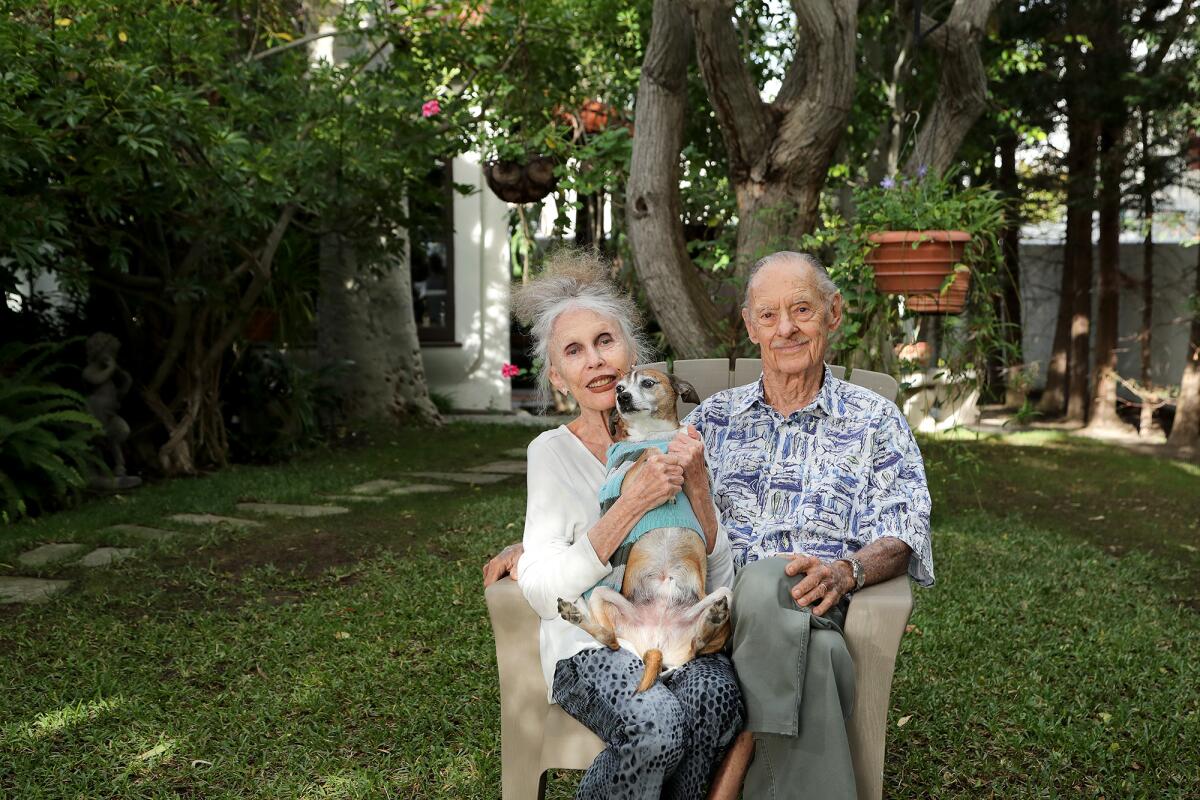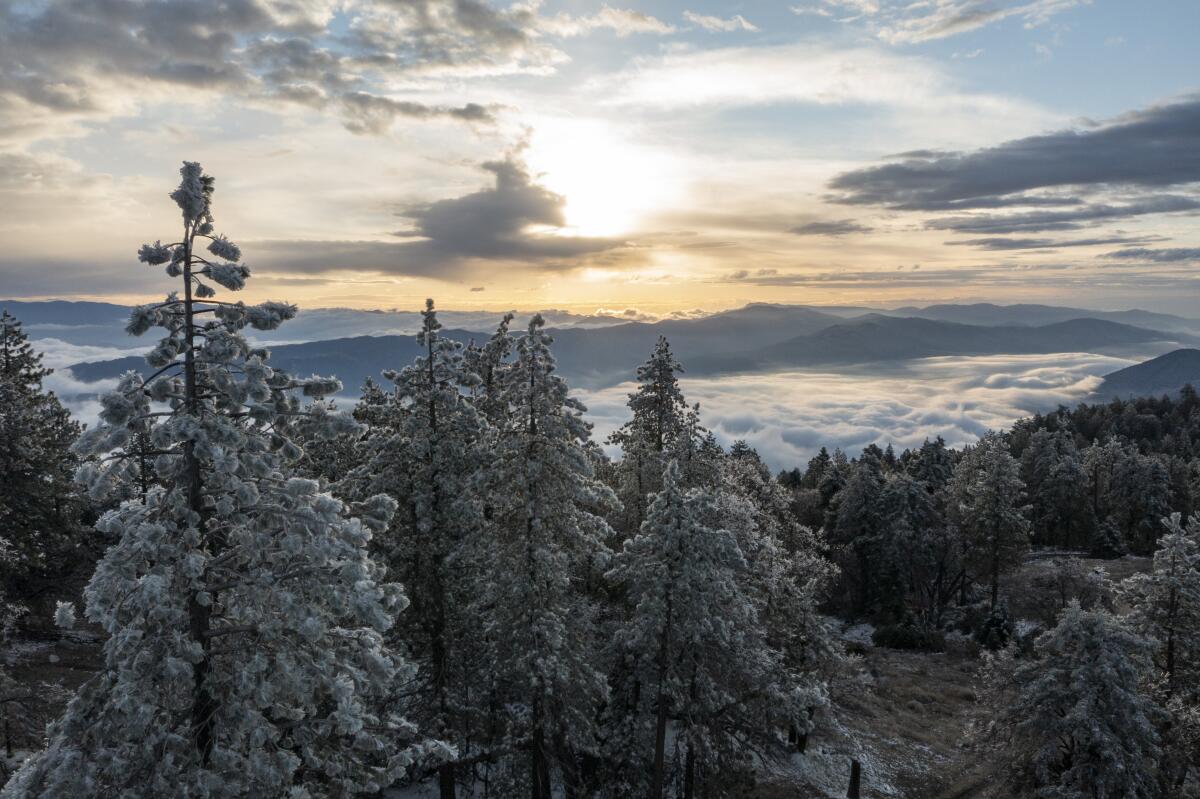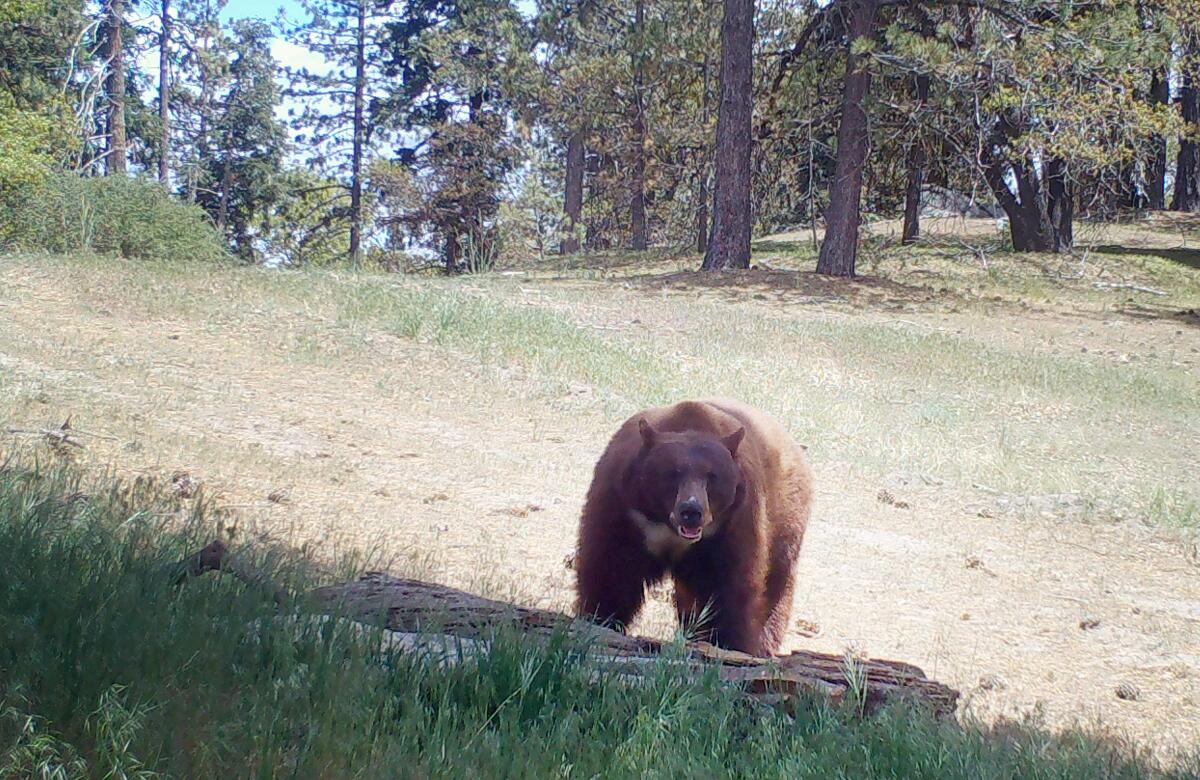Newport Beach philanthropists donate $50 million to wildlife corridor in Tehachapi Mountains

- Share via
Frank Randall hesitated a little when he called the Nature Conservancy’s newest addition — a 72,000-acre nature preserve named after him and his wife, Joan — a part of the legacy the couple will eventually leave behind.
The organization recently announced the establishment of the Frank and Joan Randall Preserve, which conservationists say will ensure the preservation of a wildlife corridor between Northern and Southern California for rare, endangered species to move.
Located in the Tehachapi Mountains north of Los Angeles, this is the nonprofit’s largest nature preserve in California.
Officials at the Nature Conservancy said efforts to establish the preserve date back at least 13 years. About $15 million was raised in grants and financial agreements arranged between the nonprofit and organizations including the Wildlife Conservation Board, the Department of the Navy, Caltrans, Resources Legacy Fund, Sierra Nevada Conservancy and the National Fish and Wildlife Foundation over the years.
But the bulk of the cost was footed by the Randalls’ “transformative” gift of $50 million.

The preserve encompasses about nine individual properties in the area and is home to slender salamanders, condors, legless lizards, golden eagles, mountain lions, black bears, bobcats and several endangered plants and blue oaks.
“This part of the Tehachapis is like no other place on Earth,” said executive director Mike Sweeney.
“It’s a biological hotspot because four very different parts of California meet there — the Sierra Nevadas, the Mojave Desert, the Central Valley and the South Coast — which means habitats for an incredible variety of species,” said Sweeney. “It’s also a missing link in a critical wildlife corridor that allows movement between species from Canada to Mexico that was threatened by development.
“Because of Frank and Joan Randall’s incredible gift, these pathways for nature can be preserved and connected for generations to come,” Sweeney said.
Frank Randall, 91, a retired commercial real estate developer, joked in an interview Wednesday that naming the preserve after the couple was the idea of the nonprofit, though he added that he was proud of it.

A published author, Joan Randall honed her interest in conservation efforts as a volunteer at the Environmental Nature Center and the Wetlands and Wildlife Care Center.
The Randalls say they were attracted to the conservancy’s project because they felt it was important to preserve the corridor to allow for wildlife to travel across the state.
A lack of mobility can lead to reduced resources in specific regions and an inbreeding depression — recessive and potentially harmful genes can become more prominent in a species due to a lack of genetic diversity in the population.
“It’ll be a much healthier animal population and we feel that that’s very important to try and maintain,” said Frank Randall. “This preserves open space as well as helps the wildlife.”
He said he reached out to the Nature Conservancy about two years ago to ask what he could do to help. He recalls that Sweeney came up with the preserve project immediately.
“I began to think that this was something I want to do a major effort for and so that’s where we got to where we are now,” he said. “I hope that my example will inspire others to try and do what they can do. Not necessarily in this particular effort but in any area that they can help preserve open space.

“I think that open space is really the key to the whole thing. If you have open spaces, the animals can migrate, and these areas remain relatively wild,” he said.
“I’m very glad I’m still alive to see it taking place,” he continued. “I’m in my 90s now. I hope I have a few more years to really see it begin to open up for what it was intended to be.”
The Randalls previously donated to other environmental efforts, including to the preservation of Banning Ranch.
All the latest on Orange County from Orange County.
Get our free TimesOC newsletter.
You may occasionally receive promotional content from the Daily Pilot.




